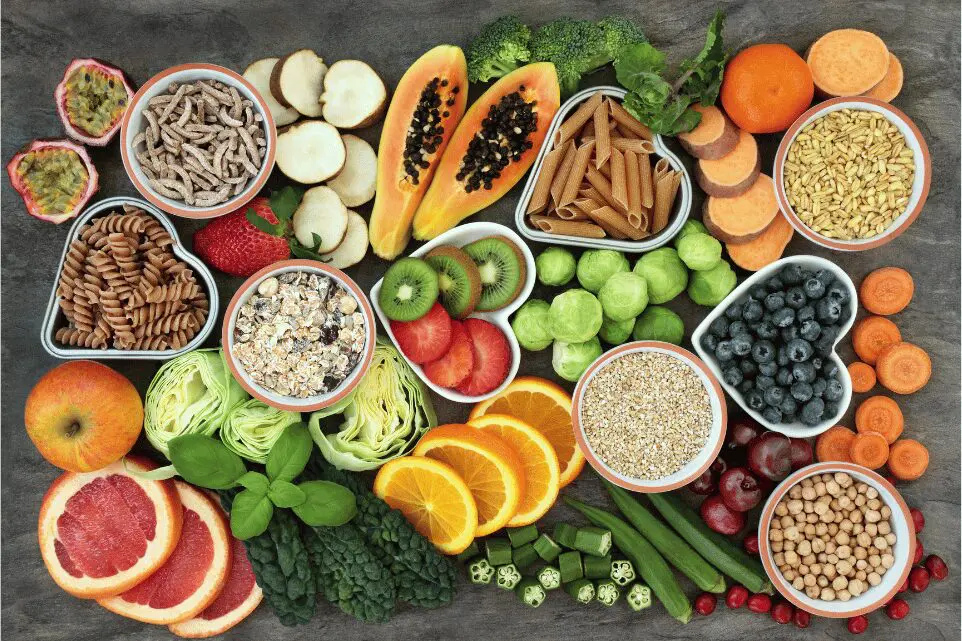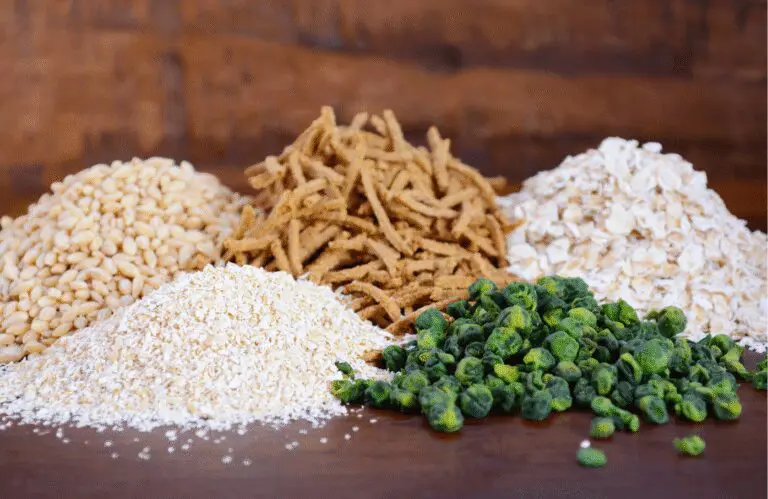Fibrosol Prebio is now ADVAGEN Prebio. New Name, Same Product
Fibermaxxing and the Microbiome “Bloom”
The gut microbiome — a dynamic ecosystem of trillions of microorganisms in our digestive tract — is deeply influenced by what we eat. Among all dietary components, fiber has one of the most profound effects. It serves as a primary fuel source for many beneficial bacteria, promoting their growth and activity.
Recently, the concept of fibermaxxing — deliberately increasing daily fiber intake through food or supplementation — has gained popularity on social media for its promise of better digestion, weight regulation, and gut health. But what happens inside your gut when you suddenly start fibermaxxing? The answer lies in a fascinating microbial reaction known as the “microbiome bloom.”
In this article, we explore how fibermaxxing causes rapid microbial shifts, what a microbiome bloom looks like, how your body may respond, and how to safely support your gut through this transition.
What Is a Microbiome “Bloom”?
A microbiome bloom refers to a rapid expansion of certain bacterial populations in the gut in response to a new food source — particularly fermentable fiber. This sudden growth can significantly alter the gut’s ecosystem within days, sometimes even hours, of a major dietary change [1].
When large amounts of fiber suddenly become available, bacteria that specialize in fermenting it — such as Bifidobacterium, Faecalibacterium, and Prevotella — multiply quickly. In the process, they produce short-chain fatty acids (SCFAs) like butyrate and acetate, as well as gases like hydrogen and methane [2].
This bloom can have both positive and uncomfortable effects, depending on your baseline gut health and how rapidly you change your diet.
Fibermaxxing Triggers Rapid Microbial Shifts
Fiber is essentially indigestible by human enzymes but serves as a feast for microbes in the colon. When fiber suddenly increases — such as jumping from 10 g to 30–50 g per day — this can fuel a rapid shift in the microbiota:
- Increased SCFA production: SCFAs nourish colon cells, lower pH, improve gut barrier function, and reduce inflammation [3].
- Enhanced microbial diversity: High fiber intake is consistently associated with richer, more resilient microbiomes [4].
- Shifts in dominant species: Individuals consuming more plant-based fibers tend to have greater abundance of Prevotella and Ruminococcus, compared to the Bacteroides-dominated microbiomes of low-fiber diets [5].
One study found that microbial composition can change in as little as 24 hours after switching to a high-fiber, plant-based diet [6]. However, this bloom also produces fermentation byproducts, which may explain initial digestive discomfort in some people.
The Side Effects of a Bloom: Gas, Bloating, and Cramping
While a bloom sounds like a good thing — and ultimately it is — it can come with short-term side effects:
- Bloating and flatulence: Fermentation leads to gas production, which can cause abdominal distension and discomfort [7].
- Cramping or urgency: Rapid fiber increases can speed up transit time, sometimes resulting in looser stools.
- Constipation (paradoxically): If fiber is increased without enough water or gradually building tolerance, it can cause stool hardening [8].
These symptoms are not harmful in most cases and tend to subside within a few days to weeks as the microbiome adapts. However, for individuals with irritable bowel syndrome (IBS) or sensitive digestion, gradual increases are essential.
Supporting a Healthy Bloom: Tips for Transitioning
If you’re interested in fibermaxxing, here’s how to do it in a way that supports a balanced bloom while minimizing discomfort:
- Start slow: Increase fiber by about 3–5 grams every 3–4 days. This gives your microbiome time to adapt [9].
- Diversify sources: Combine soluble and insoluble fiber from foods like oats, lentils, leafy greens, chia seeds, and root vegetables. A variety of fibers feeds a wider range of bacteria.
- Stay hydrated: Fiber absorbs water, so drink at least 1.5–2 litres per day to prevent constipation [8].
- Pay attention to FODMAPs: Some fermentable fibers are high-FODMAP and may worsen symptoms in sensitive individuals. Start with low-FODMAP fibers like psyllium or kiwi skin if needed.
- Track your symptoms: Mild gas or bloating is normal, but severe discomfort, diarrhoea, or constipation that lasts beyond 2–3 weeks may warrant reassessment.
The Microbiome Bloom as a Sign of Adaptation
It’s important to recognize that a microbiome bloom during fibermaxxing isn’t a negative reaction — it’s your gut adapting to a better, more fiber-rich diet.
Over time, the bloom stabilizes into a more balanced, efficient ecosystem. Beneficial species become more dominant, SCFA levels rise, and symptoms usually decrease. A more resilient microbiome can then support long-term health, from better immune function to metabolic stability [4].
Studies suggest that individuals who maintain high fiber intake over time experience sustained microbiome improvements, including lower inflammation markers and better gut-brain axis communication [2, 3].
The Bottom Line
Fibermaxxing can spark a microbiome “bloom” — a rapid, beneficial shift in your gut bacteria — as they respond to their new fuel source. This natural response may cause temporary bloating, gas, or cramping, but these are often signs of positive change.
By gradually increasing your fiber intake, staying hydrated, and eating a variety of plant-based foods, you can support this microbial bloom and unlock its long-term benefits. From improved digestion and immune health to enhanced mood and metabolism, fibermaxxing can help transform your gut microbiome into a thriving, resilient ecosystem.
Connect us on:
References
- Sonnenburg, E.D. and Sonnenburg, J.L. (2019) ‘The ancestral and industrialized gut microbiota and implications for human health,’ Nature Reviews Microbiology, 17(6), pp. 383–390. https://doi.org/10.1038/s41579-019-0191-8.
- Koh, A. et al. (2016b) ‘From dietary fiber to host physiology: Short-Chain fatty acids as key bacterial metabolites,’ Cell, 165(6), pp. 1332–1345. https://doi.org/10.1016/j.cell.2016.05.041.
- Makki, K. et al. (2018b) ‘The impact of dietary fiber on gut microbiota in host health and disease,’ Cell Host & Microbe, 23(6), pp. 705–715. https://doi.org/10.1016/j.chom.2018.05.012.
- Deehan, E.C. and Walter, J. (2016) ‘The fiber gap and the disappearing gut microbiome: Implications for Human nutrition,’ Trends in Endocrinology and Metabolism, 27(5), pp. 239–242. https://doi.org/10.1016/j.tem.2016.03.001.
- Kovatcheva-Datchary, P. et al. (2015) ‘Dietary Fiber-Induced Improvement in Glucose Metabolism Is Associated with Increased Abundance of Prevotella,’ Cell Metabolism, 22(6), pp. 971–982. https://doi.org/10.1016/j.cmet.2015.10.001.
- David, L.A. et al. (2013) ‘Diet rapidly and reproducibly alters the human gut microbiome,’ Nature, 505(7484), pp. 559–563. https://doi.org/10.1038/nature12820.
- Bijkerk, C.J. et al. (2009) ‘Soluble or insoluble fiber in irritable bowel syndrome in primary care? Randomised placebo controlled trial,’ BMJ, 339(aug27 2), p. b3154. https://doi.org/10.1136/bmj.b3154.
- Slavin, J. (2013d) ‘Fiber and Prebiotics: Mechanisms and health benefits,’ Nutrients, 5(4), pp. 1417–1435. https://doi.org/10.3390/nu5041417.
- Gibson, G.R. et al. (2017) ‘Expert consensus document: The International Scientific Association for Probiotics and Prebiotics (ISAPP) consensus statement on the definition and scope of prebiotics,’ Nature Reviews Gastroenterology & Hepatology, 14(8), pp. 491–502. https://doi.org/10.1038/nrgastro.2017.75.








